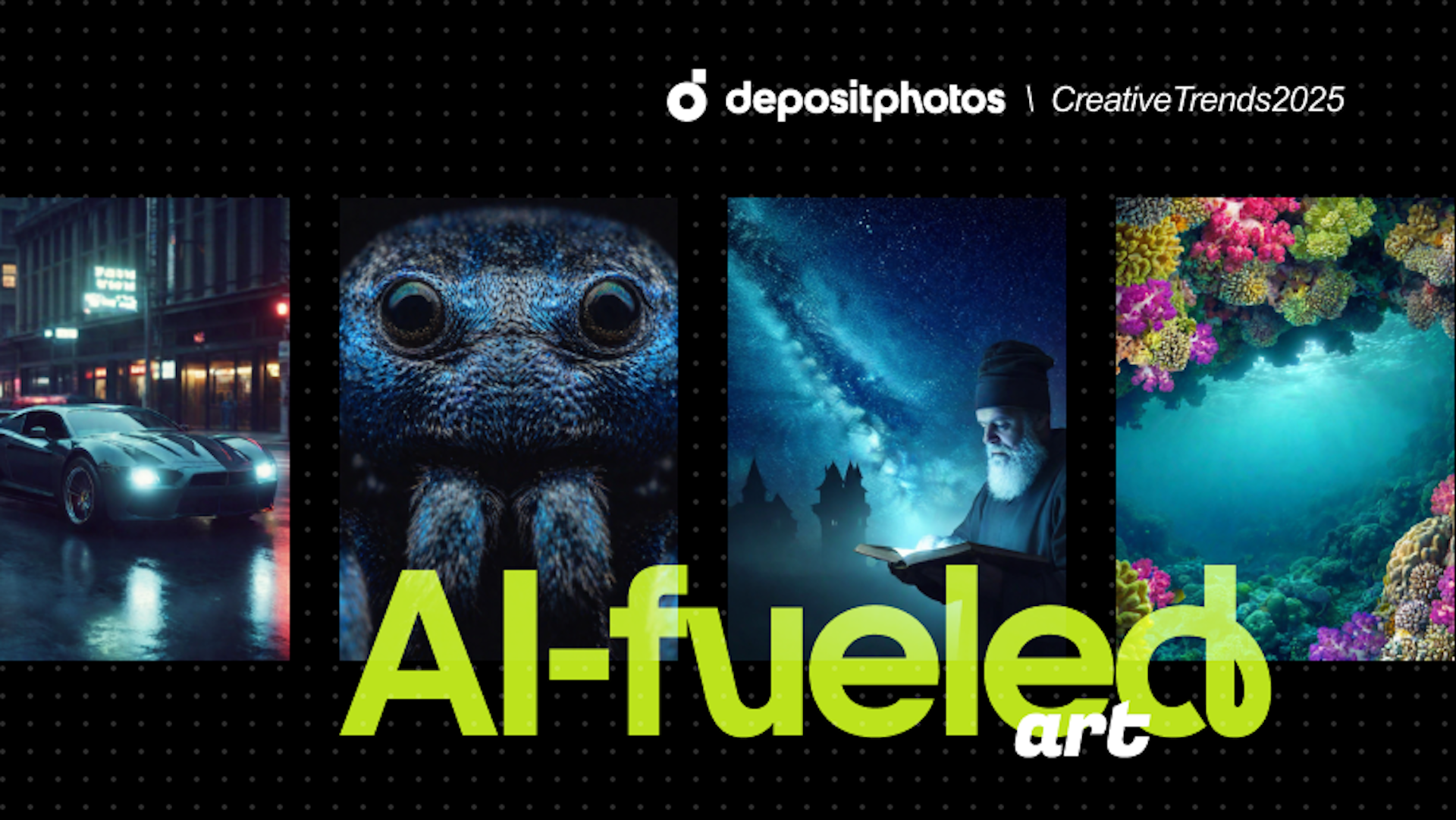
With AI-powered tools, what used to require hours of manual work, expensive software, and design expertise can now be generated in seconds. While the tech has proven controversial in recent years, it's often undeniably impressive, and can sometimes reduce production costs and help brands launch visually appealing projects faster.
As the Creative Trends 2025 report by Depositphotos shows, audience’s tastes are also changing, and this is somewhat influenced by modern AI art. Below, are five ways brands can generate relevant visuals with AI – and which AI aesthetics will get a positive response from clients and social media followers.
How will AI art influence visual communication in 2025?
The latest analysis of search keyword surges on Depositphotos, a robust stock platform with over 41 million clients worldwide, proved that creative professionals and businesses are increasingly interested in the “AI art” aesthetic, which is often characterised by dreamy or fantastic scenes.
AI tools often apply classic artistic rules to craft a piece—they create images following colour theory, golden ratio, rhythm, and leading lines. Moreover, no matter how futuristic the scene may appear, most often—if a particular artistic style was not specified—an AI tool generates a realistic, photo-like visual. Therefore, the contrast between the surreal nature of the image and its realistic style can create a sense of visual 'magic'.

5 ways to strengthen your campaign with AI-generated images
01. Experiment with new aesthetics without compromising on branding
One of the worries faced by brands with a recognisable communication style is that playing with new aesthetics will make their visuals less iconic to their audience. AI generative tools help overcome this problem by allowing you to natively combine your existing branding with new elements.
You can find the middle ground between a revolutionary new visual language and your brand book by simply giving visual references to both and conducting tests. Noir, Cluttercore, Wabi-Sabi, and Romanticism are some aesthetics gaining momentum these days.
02. Enhance storytelling by showing more

An essential feature of AI art aesthetics is the multifaceted nature of visual compositions. The recently popular ultra-contemporary style is primarily about collages and AI-fueled artworks with holistic compositions. Give detailed descriptions of the objects you want to see in your picture to tell a fascinating story in just one visual. Since AI-generated images are based on artistic principles of beauty, the final result will most likely be appealing and non-overwhelming.

03. Support AI-powered self-expression and collect UGC (user-generated content)
“Delegate” the task of generating visuals to your audience, and you might see your engagement rates soar.
There are many examples of campaigns based on user-generated AI content—from crafting custom designs for products to taking part in challenges on social media. The essential rule is to provide them with high-quality image-generation tools on your website or app.

04. Experiment with a new aesthetic on social media
To win the attention of social media users, your brand needs to respond quickly to events that interest your audience and apply a visual language they admire. According to the Depositphotos report, emerging aesthetics include elements of hyper-sentimentalism, grunge, Asian-style minimalism, surrealism, and elevated perspective photography.

05. CGI, 3D, and AI – mix it up!
By combining 3D technology, CGI, and AI for image generation, you can produce visually stunning multimedia content cost-effectively. For example, you can divide production into three stages: 3D modeling to create main objects, CGI for realistic lighting and textures, and generative AI to tailor content to a particular audience or case. You can use photos or videos instead of 3D.







